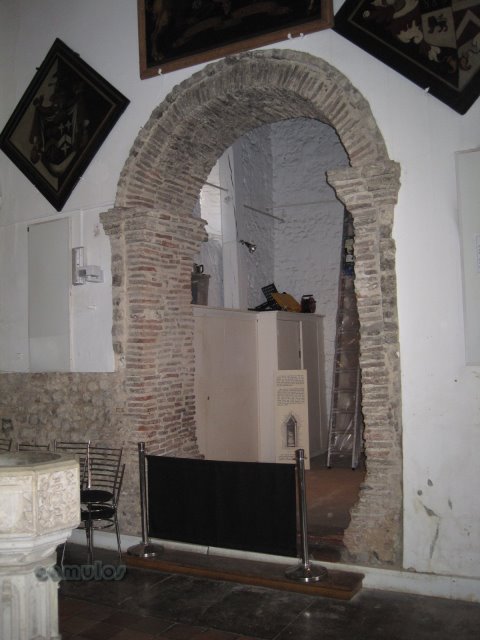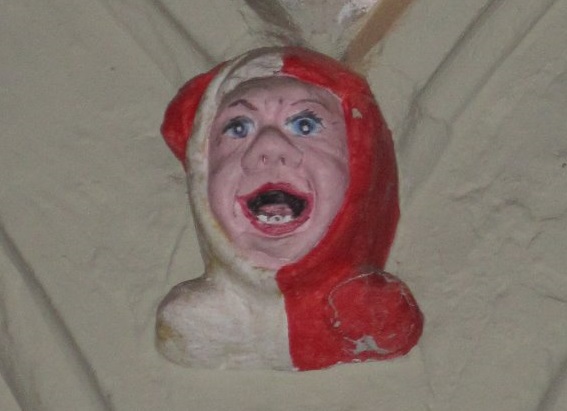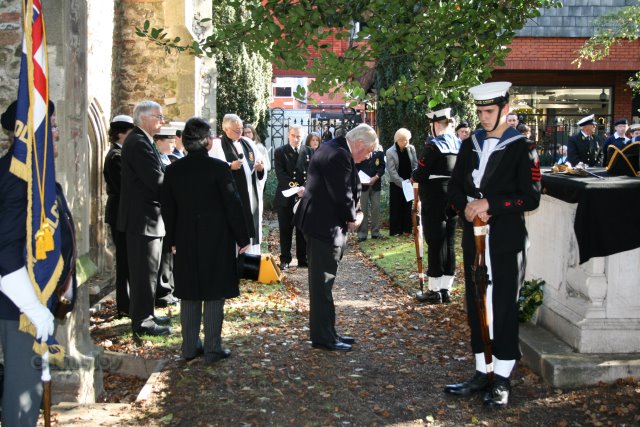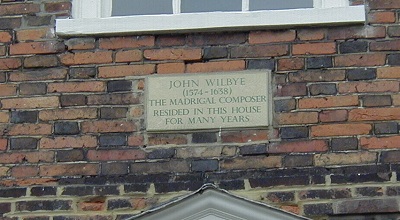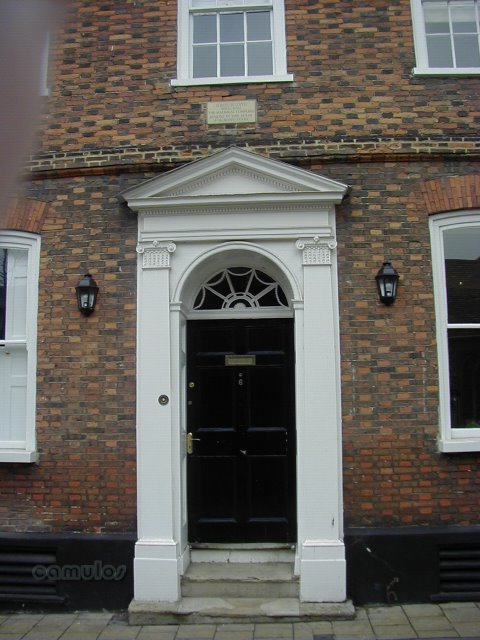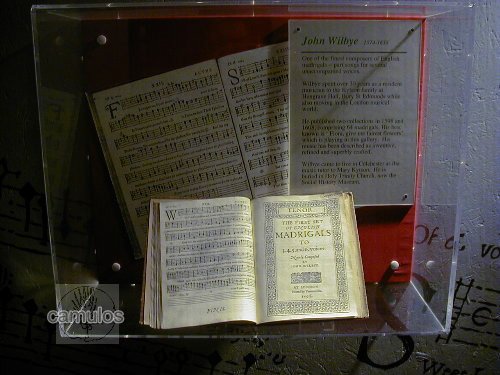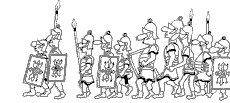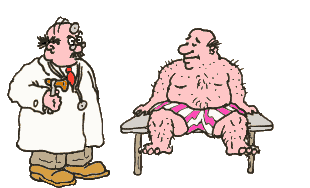PART
![]()
of your

GUIDED
TOUR
OF
COLCHESTER
We continue our virtual tour having just visited and seen our imposing Town Hall in our High Street, which is known to follow the original Roman street that would have joined Balkerne Gate to the west and East Gate to the east. But, before we set off, on this, our third part of this tour, as before, we will give you a little more of our Romano-British history, so that you can fit the places and buildings that we'll see with the events that produced them.
~~~~~~~~~~~~~~~~~~~~~~
The Romans came to Colchester in the year 43 AD and here they were to stay until around the year 411 AD, when the Roman Empire was in decline and their forces were required on other fronts. The east of Britain was being threatened by Saxon and Danish invaders, Vikings to the north and, after the Romans left, law and order, stability and trade took a nose dive. This is the period of King Arthur, when Colchester would have been his beloved Camelot, a walled and easily defended city. We then entered the Dark Ages, when very little evidence exists of there having been any inhabitation within the town's walls. The Roman buildings eventually decayed and collapsed, the Norman conquerors arriving some six centuries later to a place that must have seemed as if it had been built and populated by giants.
~~~~~~~~~~~~~~~~~~~~~~
1
Along the High Street to the east, we have the George Hotel, one of the last of our coaching inns, certainly dating to the 16th century - and perhaps earlier than that. It was given a Georgian front, but inside, its timber framed construction has been very well restored. If you can call it a pub, it is perhaps our most sumptuous. Call in there for a drink (virtual of course!) and see what we mean!
If you have the time, walk down East Stockwell Street, next to the George. There you will see the original archway where coaches would have arrived at the inn. Across the road is a widened area to facilitate the coach turning circle. The archway has now been blocked up due to the redundancy of its original function for coach and horse use.
2 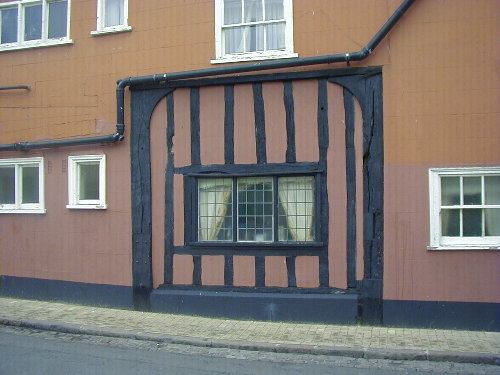
We then move on to the next important hostelry in our High Street.
![]()
3 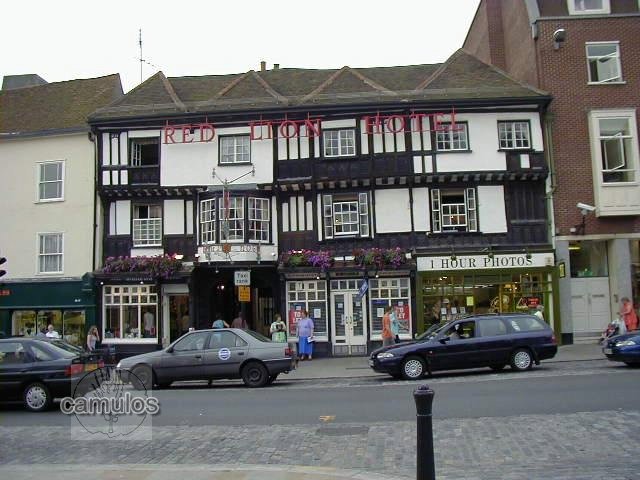
Cross over the road from the George and we find another ancient inn.
The Red Lion was originally the private home of the Howard family, the Dukes of Norfolk, built in a very grand style in the 15th century. It was later converted to an inn, as so many houses were, after the dissolution of the monasteries by Henry VIII, and a shortage of accommodation came about. A drink at the bar or a meal in the restaurant is to be recommended, where the quality of the timber framed architecture can be better appreciated.
4 & 5 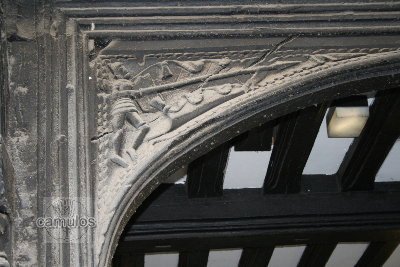
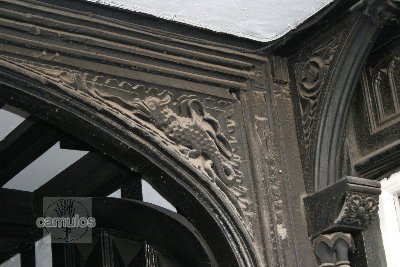
Walk through the archway, where you will see George and the Dragon carved into the ancient framework. This was a reference to the Dukes of Norfolk holding the heraldic Order of the Garter. You are now in Red Lion Yard, the old stable yard, where you will see a variety of little shops. Here is a map from 1879 that shows how this area used to be laid out. No shops, no covered way, No Culver Street. No, this was a vibrant space, filled with the trappings associated with a coaching inn, mostly stabling for horses, spaces for tack and carriages, a boot store, a kitchen, a bar for the coachmen and perhaps the stable workers. Just imagine the sounds and the smells of that bygone time. This was where a stage coach of old, would arrive in Colchester and make its way directly to the Red Lion, the landlord at the ready as the coachman skilfully steers his coach and horses through the massive gates - remembering to remove his hat and to duck, for fear of knocking his block off - the landlord then signalling for his servants to close the gates, thus ensuring that the passengers were his, not the George's, customers for the night. The romance of those coaching days, sadly, a thing of the past.
5a 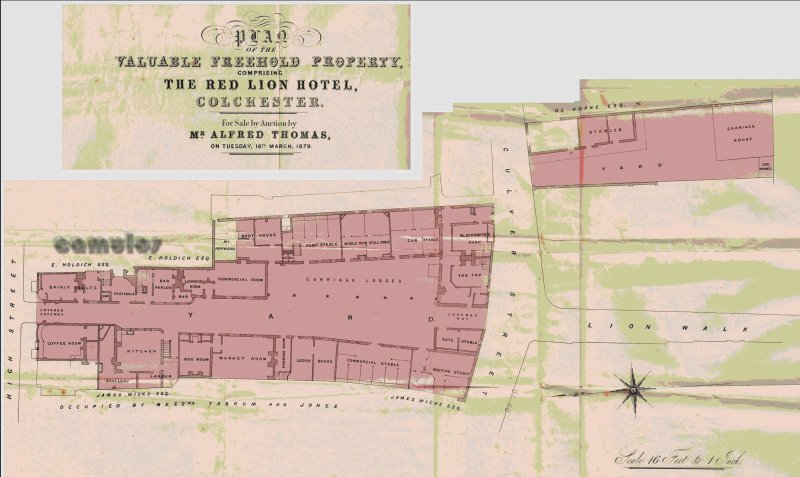
Keep walking and you will come out into the Red Lion Shopping Precinct (created in the 1970s). Keep going, past Lion Walk church (which suffered badly during the earthquake of 1884) and you find yourself at an ancient thoroughfare known as Eld Lane, which runs parallel to our incredible town wall. A gap between shops in Eld Lane takes us to.....
![]()
(the view from)
6 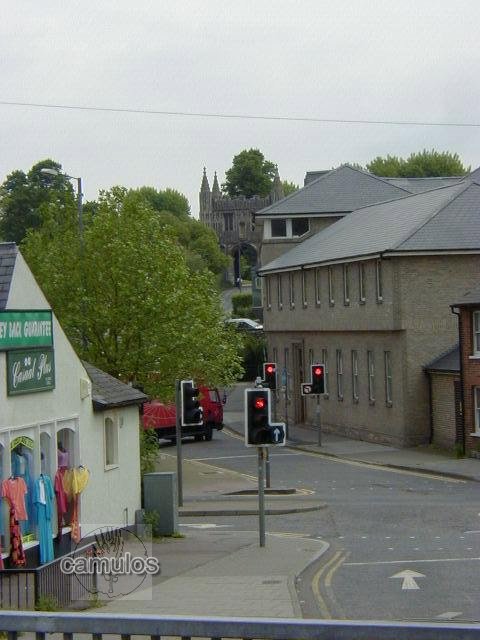
A small passageway ahead takes us to Vineyard steps, set at the top of a southern section of our Roman wall. There are steps down to the other side (to outside the town wall), where the town's market was once (1990s) unpopularly located. In the distance can be seen the imposing St. John's Abbey Gate, which is always worth a visit - if time permits.
The car park below these steps occupies an area that, up until the first world war, was effectively, Colchester's red light district. In the 1870s, no less than 13 public houses were brought in front of the magistrates, on suspicion of being brothels and harbouring women of ill repute. Of course, Colchester was then, and still is, a garrison town; and in those days, a soldier could not marry without the permission of his commanding officer. Brothel keeping, whilst illegal, was good business! The daft thing is that prostitution was a legal profession to be in, as it still is today!
![]()
7 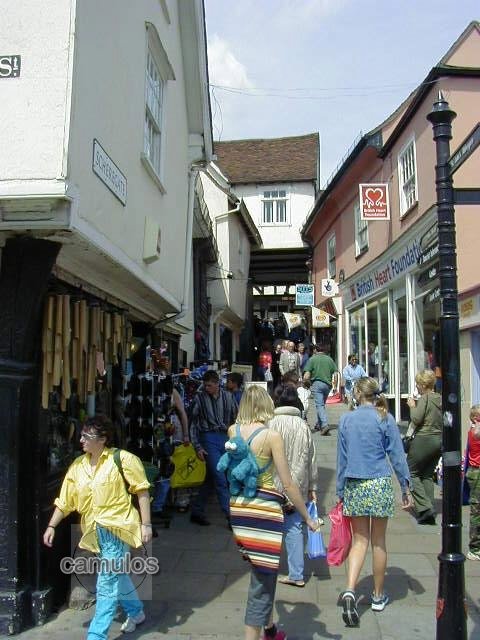
We pass outside the Roman walls and walk westwards, and look back on the Scheregate Steps. Scheregate is a product of the Norman period, cut through the Roman wall to provide a thoroughfare for workers travelling to and from St. John's Abbey. 'Schere' meaning narrow, this 'gateway' was never used for vehicular access. At the top of the steps is the Purple Dog pub, previously the Clarence.
![]()
8 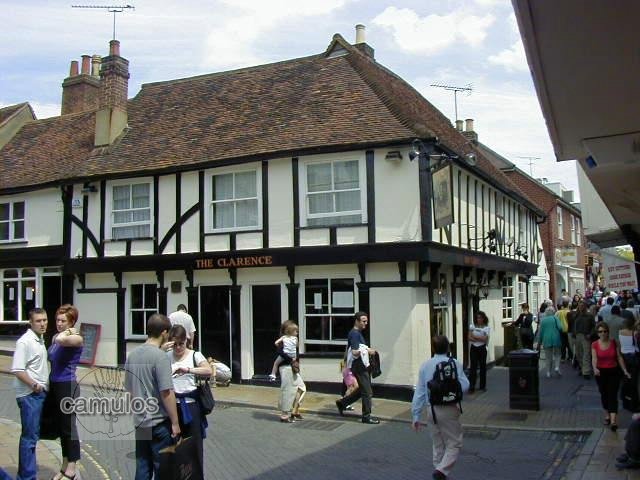
The Purple Dog/The Clarence was once an ancient public house that, like so many taverns of the time was located on the corner of two streets to lure the working man away and part him from his hard earned wages. It is yet another fine old timber framed building that has survived the ravages of time, this house taking its name in the middle of the 19th century from the Duke of Clarence. Before that it was the Joiners Arms, a reference to local tradesmen of that calling. As with so many of our old pubs, it now has a new name and image. A sad sign of the times?
Continuing up Trinity Street (named after Holy Trinity church) we arrive at Tymperleys.
![]()
9 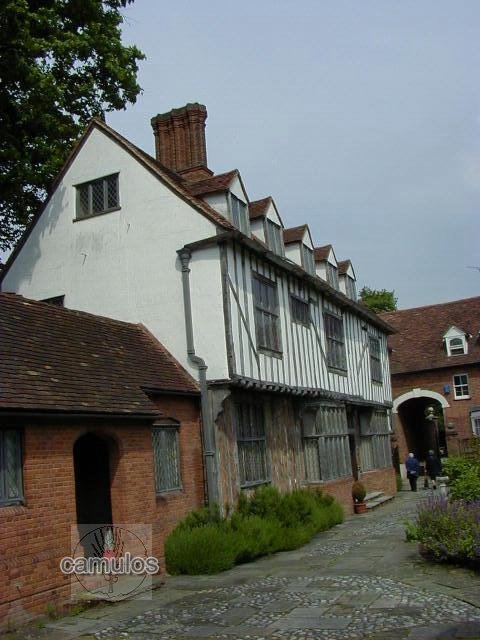
9a 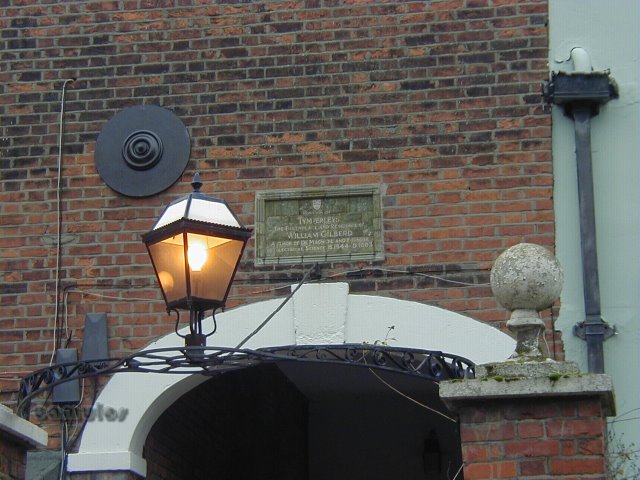
Tymperleys is a fine timber framed building which once formed part of the house owned by William Gilberd, the discoverer of electro-magnetism and physician to the court of Elizabeth I, during the 16th century. The building was gifted to the people of Colchester as a clock museum, but when that closed, it became a tea room. The following picture hangs in our Town Hall and shows a Victorian view of 'Good Queen Bess' and William Gilberd.
10 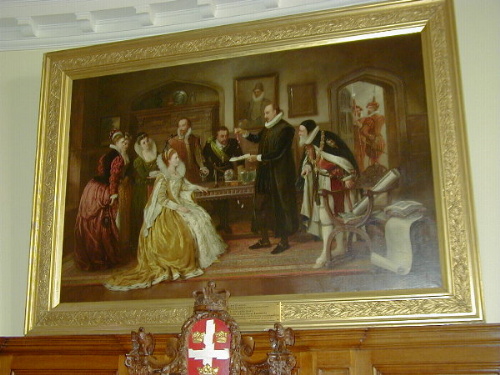
Below is a view from inside nearby Holy Trinity Church, where a member (Mike Powell) of the Colchester Town Watch was there to commemoration Gilberd's life at the memorial to William Gilberd. Was Gilberd buried in the churchyard? We know not.
11 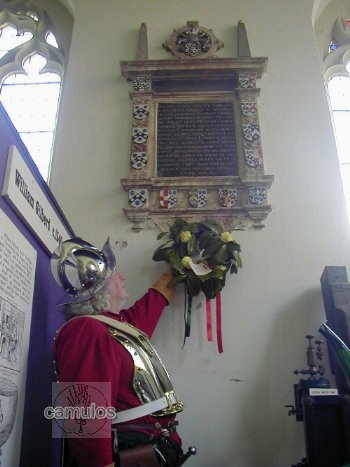
![]()
Tymperleys became a tea room in 2010s, having rested unused and emptied of its treasures, for several years due to the clock museum that it once was, being closed, due (we were told) to government cuts. So, let us indulge ourselves here a little bit and look back on how the interior once was, when it was an amazing museum of Colchester and area produced clocks. A virtual tour within a virtual tour, if you like.
GUIDED
TOUR OF
(what
used to be) TYMPERLEYS CLOCK MUSEUM

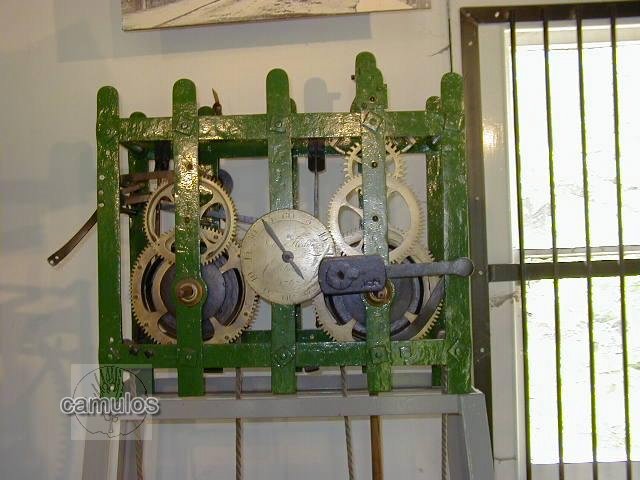
 33
33 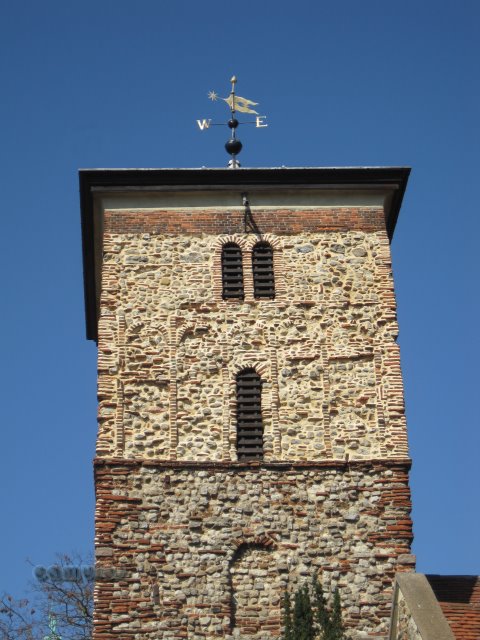
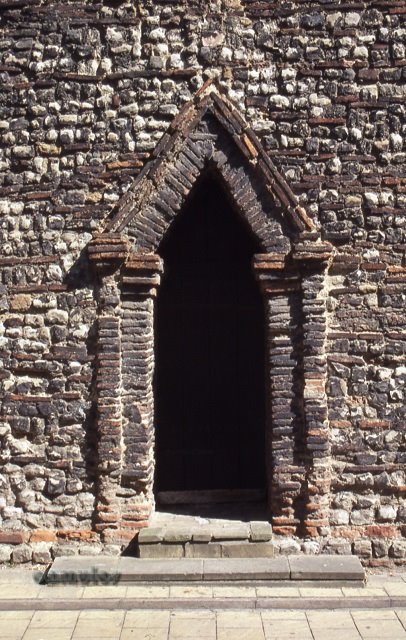 35
35 